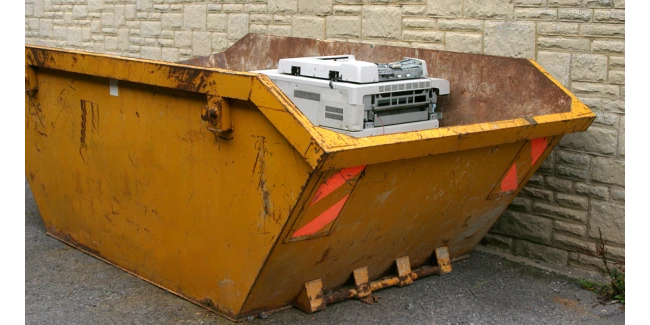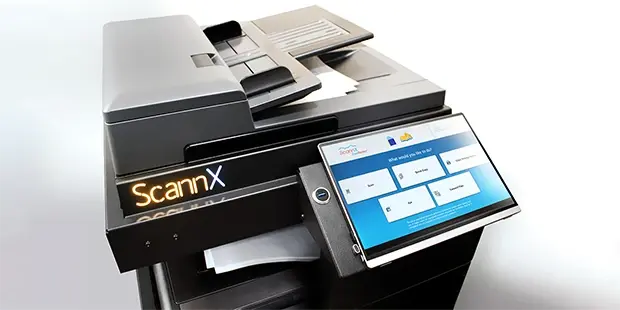As easy-to-use self-service scanners become commonplace in libraries across the country, the debate over the future of photocopiers is changing. Once, digital scanners were seen as a convenient supplemental service, while the multi-function copy machine was the temperamental workhorse of the library.
Today, the momentum is shifting, and a growing number of librarians expect scanners to eventually replace copy machines. Why? Well, the world has changed a lot since Chester Carlson first used static electricity, light and dry powder to make the first copy in 1938. The library patron of 2015 wants to access information digitally and on the go, using laptops, tablets and smartphones. And modern libraries are increasingly concerned about saving paper, both to cut costs and to protect the environment.
The copy machine has tried to keep up with the trends, adding double-sided printing and scanning capabilities. But that’s also made it more complicated to use. Library staff are constantly asked for help making copies, clearing paper jams, and changing toner. In contrast, self-service scanners like the ScannX Book ScanCenter offer an intuitive touch-screen interface that walks users through every step of the process, from cropping and scanning to saving the digital documents in a variety of formats and sending them via email, fax, or directly to a smartphone or tablet.
There are still skeptics, who say the copier will never completely disappear because their patrons will always expect and need them. But libraries who have taken the plunge say they aren’t hearing any complaints.
The University of Washington, for example, has been steadily replacing their fleet of copiers with state-of-the-art self-service scanning kiosks since 2011. Motivated by a state mandate to reduce paper consumption and a University culture that embraces environmental sustainability, UW librarians and IT professionals are convinced that the future of educational research, collaboration, and information management was digital. A report by the University’s communications services division – called Dawg Prints – states that the “increasing availability of documents online, the ability to work on them electronically, and the convenience of storing and sharing them, have meant a reduced need in copying physical documents.”
A year into the program, a survey of students revealed that 96 percent of users said the scanners were easy to use and 70 percent said they were a viable replacement for a traditional multi-function photocopier. One respondent called the Book ScanCenter “the single most useful piece of equipment in the library.” By the end of 2013, the University had completely switched the stand-alone copy machines in public areas for self-service scanners.
“By and large, the students find this to be one of the finest pieces of technology we’ve ever put in the library,” said Adam Hall, Manager of Operations for Reference & Research, “The day is going to come when we’re going to forget we ever had photocopiers.”
The next generation may not have to forget. High school librarians at Amador Valley High School in Pleasanton described how students would approach the copier with trepidation, unsure where to put the coins, or where the paper copy would come out. For today’s high school students, they said, copiers are as unfamiliar as mimeograph machines were to their parents’ generation. In contrast, they’ve grown up with smart phones and tablets, and touch-screen technology is second nature.
In 2013, when Amador Teacher-Librarian Erik Scherer saw how easily students embraced the Book ScanCenter, he removed the copier from the library. “It’s a technology that is not as engaging for students to use. The Scanxx system allows them to scan and use the materials at home and in their preferred format.”
So maybe it’s not that the debate about copier-free libraries that’s changing. Maybe it’s the age of those discussing it. An older generation that grew up knowing the photocopy machine as the workhorse of the library is reluctant to see it put out to pasture. For the digital generation, the idea of paper trays, toner, and making hard copies of printed materials is already seeming quaint, and the next generation won’t even see it as a choice. As one Amador Valley High School student put it, “I’m sure my kids will be like, ‘What? You used paper?’




